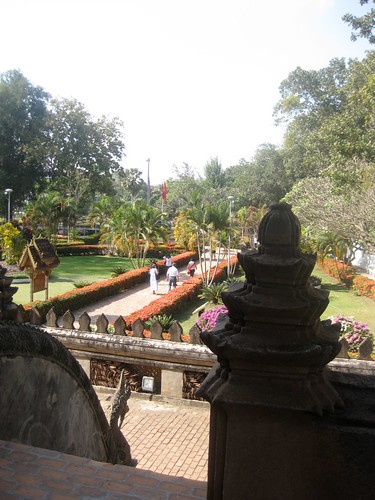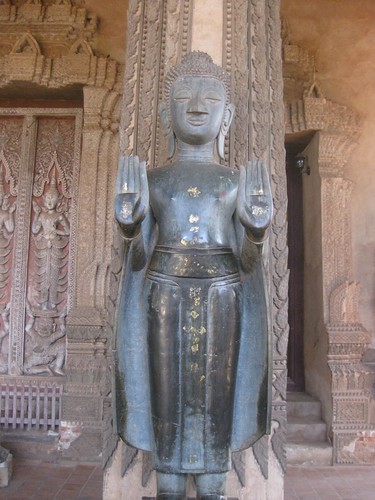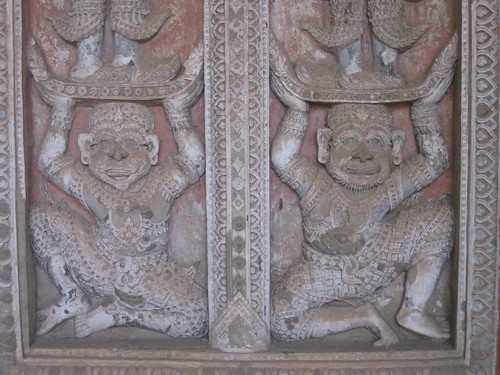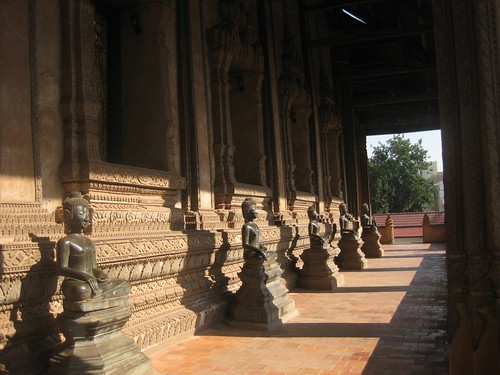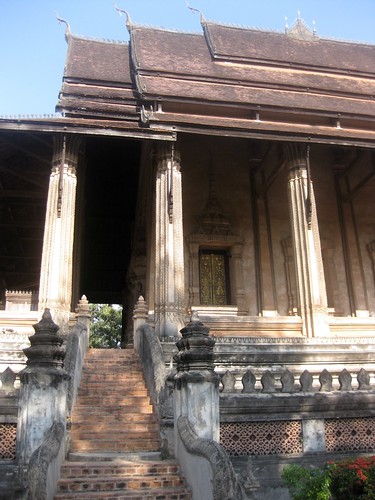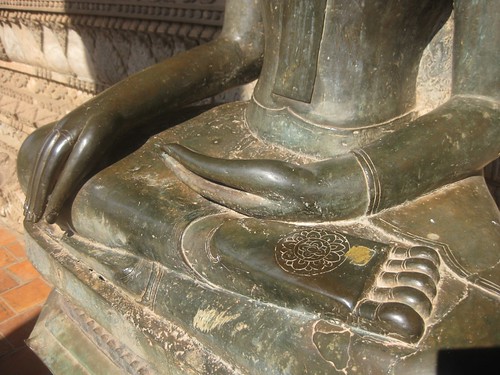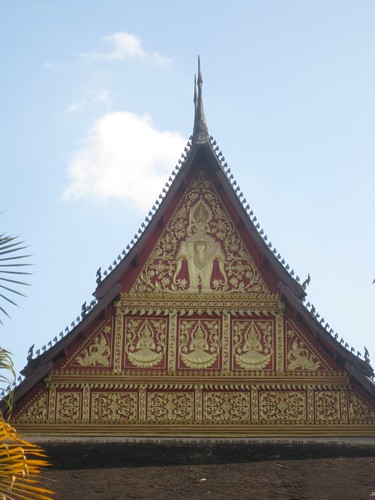I’ve driven past this temple many times and glimpsed its imposing columns and traditional roof from the road, but the tour buses parked outside the gate discouraged me from checking it out. There’s nothing less zen than trying to explore a temple with a throng of tourists.
When we returned to Vientiane from Bangkok a few weeks ago, we still had a few days off before school resumed, so I cycled over to Wat Haw Phra Kaew and met up with my friend Nikki and Michelle, her friend visiting from Canada.
Unlike most temples in Vientiane, this one actually got some internet press. Wikipedia has a good synopsis of the information I found on a variety of sites:
Haw Phra Kaew was built between 1565 and 1556, on the orders of King Setthathirath. The temple housed the Emerald Buddha figurine, which Setthathirath had brought from Chiang Mai, then the capital of Lanna, to Luang Prabang. When Vientiane was seized by Siam (now Thailand) in 1778, the figurine was taken to Thonburi and the temple was destroyed. When it was rebuilt by King Annouvong of Vientiane in 19th century it was again destroyed by Siamese forces when he rebelled against Siam to attempt to regain full independence of the kingdom. The revered Buddha now resides in Wat Phra Kaew, Bangkok. The temple was rebuilt for a third time by the French in the 1920’s during colonization of French Indochina.
Visitors leave their shoes at the bottom of the stairs when they enter the temple to show reverence.
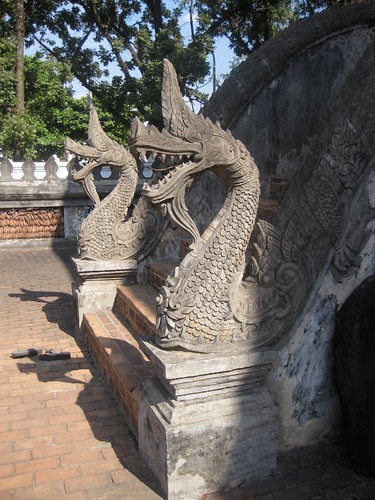
Photography is forbidden inside the building, where artifacts were on display.
Overall, I have say there was something missing for me at Wat Haw Phra Kaew. I couldn’t put my finger on it at first, but now I realize that the missing element was the monks. This temple is no longer a place of worship and has been converted into a museum. I always like to see the spiritual and mundane co-existing at working temples, where monks might be eating lunch or studying in the shade of a flowering tree. Usually, one of the monks is happy to chat about the temple or share some Buddhist principles. Now I realize that’s one of the best parts of exploring the local wats.



